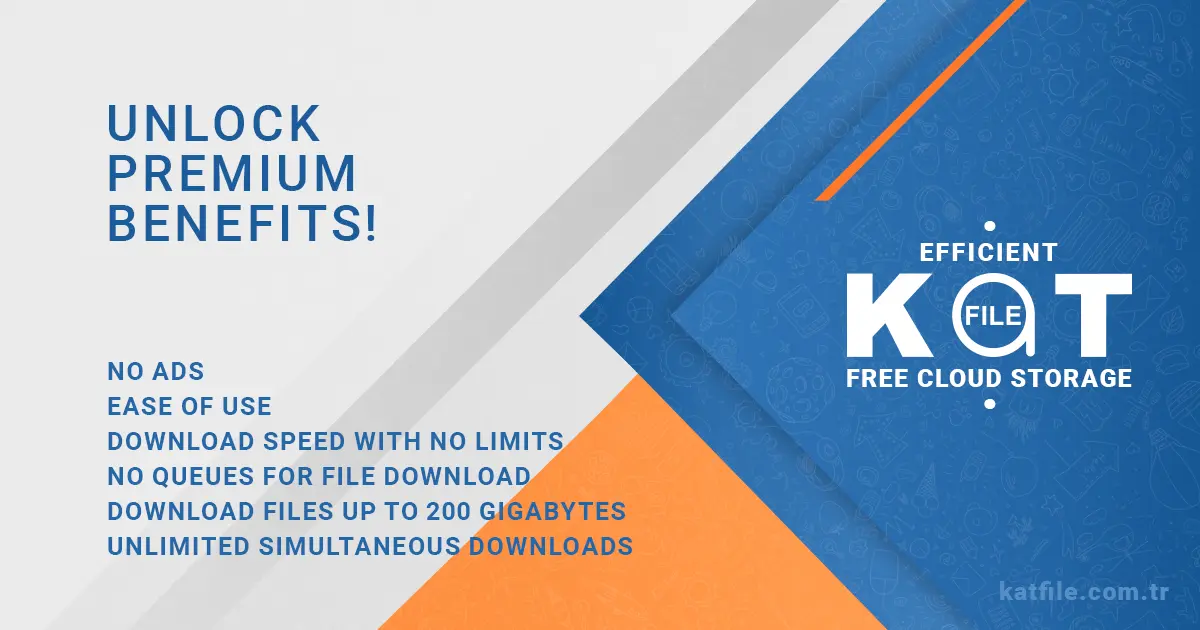
Katfile
HIGH-QUALITY STORAGE SERVICE WITH UNLIMITED AT KATFILE.
A Comprehensive File Hosting Solution
In today’s digital age, the need for efficient and reliable file hosting services has become paramount. Among the many options available, KatFile stands out as a versatile and user-friendly file hosting provider. With its online storage and remote backup capabilities, advanced uploading and downloading tools, KatFile offers a seamless experience for users seeking a secure and accessible platform for their files.
Katfile Premium Account

Unveiling KatFile’s Features
KatFile serves as a hub for storing various types of files, including documents, images, videos, audio files, and even interactive flash content. This comprehensive approach allows users to keep all their digital assets in one place, making management and sharing easier than ever.
Online Storage and Backup
One of the fundamental features of KatFile is its online storage and remote backup capabilities. Users can securely upload their files to the KatFile servers, ensuring that their valuable data is protected from potential hardware failures or accidental deletions.
Advanced Uploading and Downloading Tools
KatFile offers a range of advanced tools for both uploading and downloading files. The user-friendly interface streamlines the uploading process, allowing users to effortlessly upload their files to the platform. On the other end, downloading files is a breeze with KatFile’s efficient system, ensuring a smooth experience for users and reducing wait times.
Versatile Content Hosting
KatFile goes beyond basic file storage by providing users with the ability to host a variety of content types. Whether it’s documents, images, videos, audio files, or even interactive flash content, KatFile offers a unified platform for hosting and sharing diverse digital content.
Seamless Playback of Various Formats
One notable feature of KatFile is its capability to play various file formats directly on the platform. Users can easily view images, play videos, listen to audio files, and even interact with flash content without the need to download the files first.
Enhanced Accessibility
With KatFile, files can be accessed from anywhere with an internet connection. This accessibility is especially valuable for users who require their files on the go or need to share them with colleagues, clients, or friends in different locations.
User-Friendly Interface
KatFile takes user experience seriously, providing an intuitive and easy-to-navigate interface. Uploading, organizing, and managing files is a straightforward process, even for users who might not be tech-savvy.
Security and Privacy
Security is a top priority for KatFile. The platform employs encryption protocols to protect users’ files from unauthorized access. Users can confidently store their sensitive documents and media on KatFile, knowing that their data is safeguarded.
Embracing the Future of File Hosting
KatFile emerges as a reliable and versatile file hosting solution that meets the needs of individuals and businesses.
With its online storage, advanced tools, versatile content hosting, and emphasis on security, KatFile offers a comprehensive platform for users seeking an efficient way to manage, store, and share their digital assets.
As our reliance on digital content continues to grow, services like KatFile play an essential role in ensuring seamless access and protection of our valuable files.
What is a KatFile?
In short, KatFile is a file hosting provider that offers online storage and backup solutions, allowing users to upload and store various types of files, including images, videos, and documents. It serves as a convenient platform for sharing digital content securely and efficiently. Users can access their files from anywhere using different devices connected to the internet. Additionally, KatFile’s search engine enables users to find files across the internet, making it a versatile tool for file management and sharing.
How to become a member of KatFile?
According to the information provided above, signing up for KatFile is a straightforward process.
Users can create a free account by entering their email address and password. Once registered, they gain access to various features such as uploading and storing files, as well as the ability to share and distribute content.
For those seeking premium benefits like faster downloads and unlimited streaming of videos, upgrading to a premium account is also an option. This registration process allows users to easily harness the platform’s capabilities for efficient file management and sharing.
Click for more information about free membership to Katfile.
Is There a Refund Option for KatFile?
Refunds for KatFile are only applicable if you haven’t started using your account.
Once you’ve uploaded a file or consumed download bandwidth, refunds cannot be issued. Your Premium Account will remain active until canceled or terminated under these Terms.